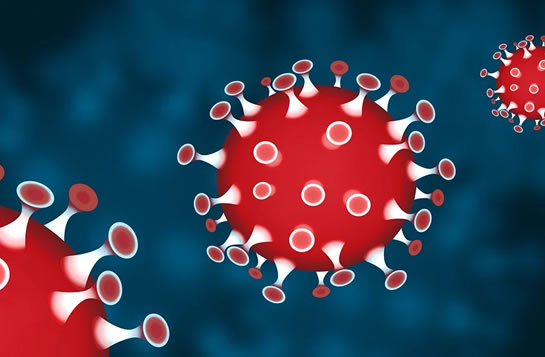Merton's Coronavirus Rate Still Higher Than London Average
New Government figures include community test results for the first time

The number of coronavirus cases in Merton is still running at a higher rate than the London average, as well as the overall figure for England.
The Government changed the data issued by the Department of Health on Thursday evening (July 2) to include details of Covid tests carried out in the community by the Government's commercial partners - the "Pillar Two" tests.
Previous figures from the Department of Health, which showed 705 people in Merton had a positive test result for Covid-19 up, only included data from "Pillar One" tests, which were carried out in NHS or Public Health England labs.
The new figures, which combine Pillar One and Two tests - without any duplication, now show there have been 931 positive cases in Merton. The vast majority would not have been new cases, but they weren't previously publically reported.
Using the previous figures, the number of cases in Merton had increased by nine across the whole of June. The Government changed the figures it released after criticism over a spike in cases in Leicester, with the local authority there saying it was not aware of a recent increase in cases from "Pillar Two" testing.
The new figures for Merton represented 451.5 people per 100,000 people in the borough, compared with a new London average of 378.6 people per 100,000 residents and an English average of 435.7.
However Merton has fared better than the neighbouring boroughs of Croydon (478 cases per 100,000) and Sutton (487.5 per 100,000). But Wandsworth (349.5 per 100,000) and Kingston (417.7) both had better figures.
Other figures have shown that nearly 1,000 people have recovered from coronavirus at St George’s Hospital.
The details were revealed in the trust’s board report, which also showed the hospital has passed the peak and the number of patients with the virus remains low.
The number of patients coming into hospital with coronavirus per week had reduced to 30 as of June 16. This was down from a peak of 304 per week on April 2.
Likewise, the number of patients in intensive care has reduced to six, down from a peak of 83 on April 12. A total of 945 patients who tested positive for the virus have been discharged, but sadly 297 have died.
“Our forecast is that we will continue to plateau in respect of Covid-19 patients,” said Robert Bleasdale, Chief Nurse and Director of Infection Prevention and Control.
He said that the trust still has more capacity than demand for coronavirus patients.
“As the current social distancing measures are eased, we will continue to track the impact closely on forecast demand, seven to 14 days in advance as part of the Trust site operational meetings,” he said.
However the virus has had a significant impact on the trust’s finances, resulting in £6.6m being spent in April and May.
This was due to additional staffing costs to support increased intensive care capacity and cover for staff screening and isolating as well as increased cleaning costs and costs for testing.
Non-NHS income of £1.2m has also been lost due to lost car parking and catering income, as well as private patient income.
It has also been difficult to persuade some patients to come into hospital for other operations.
Chief Executive Jacqueline Totterdell, said: “This is entirely understandable and to be expected,” and that the trust is “working hard to reassure patients and the public that we will keep them safe whilst under our care”.
Board members were also updated on the new coronavirus risk assessments for staff, after studies showed people from a black and minority ethnic background were at higher risk of coronavirus.
This looks at risk to staff based on factors such as age, ethnicity and existing health conditions and provides a score. Depending on the score, there may be adjustments to someone’s working environment or a referral to occupational health.
As of June 15, the HR department had received 2,271 completed risk assessments across the trust.
Ms Totterdell also took an opportunity to respond to the killing of George Floyd in the US, and the Black Lives Matter protests across the globe, reinforcing her commitment to “making St George’s a truly diverse and inclusive organisation; whilst also acknowledging that, sadly, there are still too many examples of discrimination within our organisation”.
She said: “Some of our BAME staff have been the subject of racist abuse, including from colleagues. Listening events held last month showed the extent of the problem in some areas; which, whilst still the exception rather than the rule, are disgusting, unacceptable, and proof (if it were needed) that we need to work much, much harder to tackle discrimination wherever we see it.
“I received a number of replies to my message from staff, both welcoming my words but, rightly, asking what we, as an executive team and trust board, are going to do to tackle the problem. For me, this is a fair challenge, and we are currently reviewing our approach. However, this is something we all need to take responsibility for – and that, together as a wider organisation, we jointly need to find a way to improve.
“The Black Lives Matter movement has shown that there is a real need and yearning for change. And, as a diverse employer representing diverse communities, we have to step up and play our part in changing the conversation so every member of staff, whoever they are, or whatever their role, feels they will be treated equally; and, if they aren’t, that they truly believe and trust that we will listen and act on their concerns. We have a duty to get this right, and constantly challenge ourselves; it is what our staff deserve, and what our patients rightly expect.”
Produced with input from Sian Bayley, Local Democracy Reporter
July 3, 2020